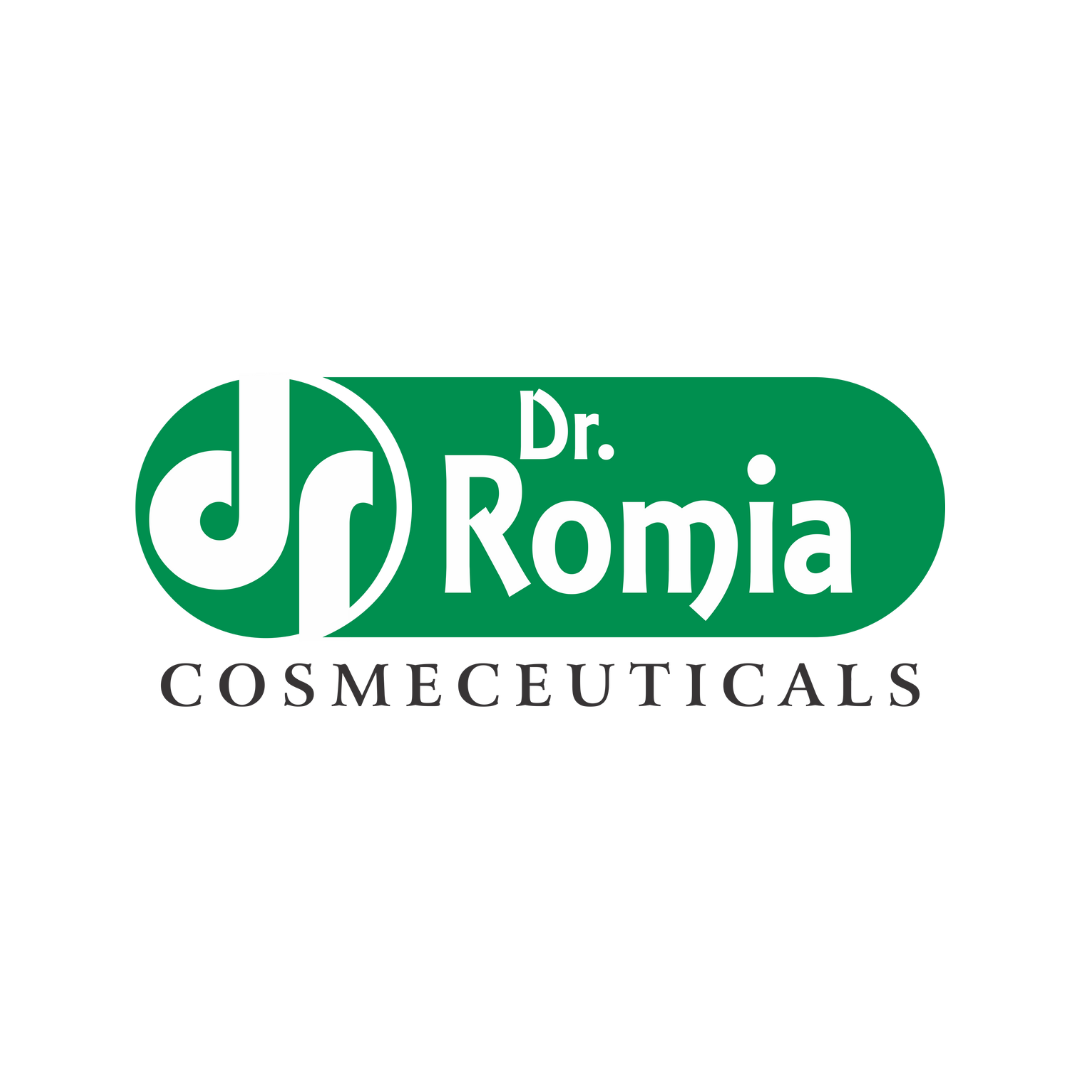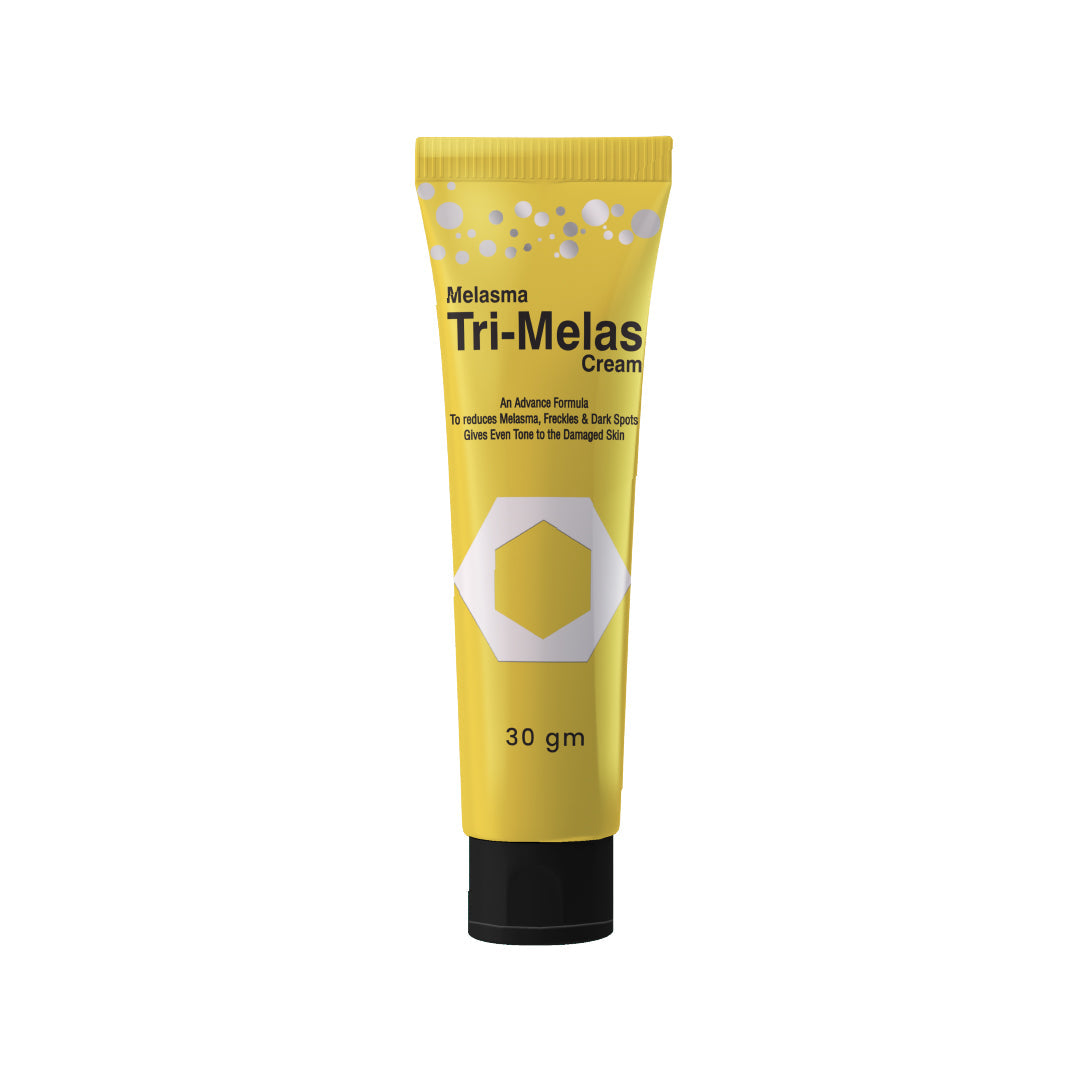
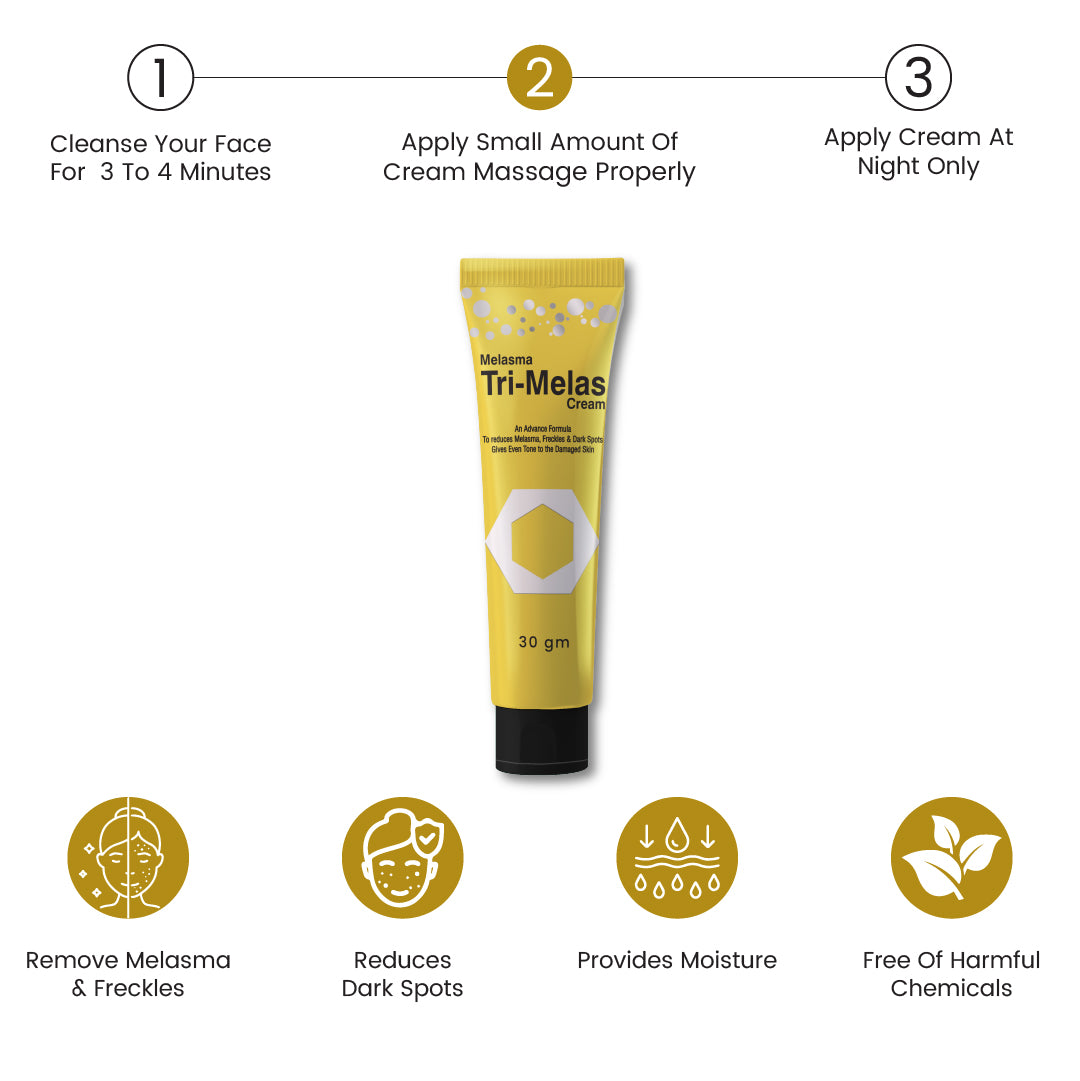
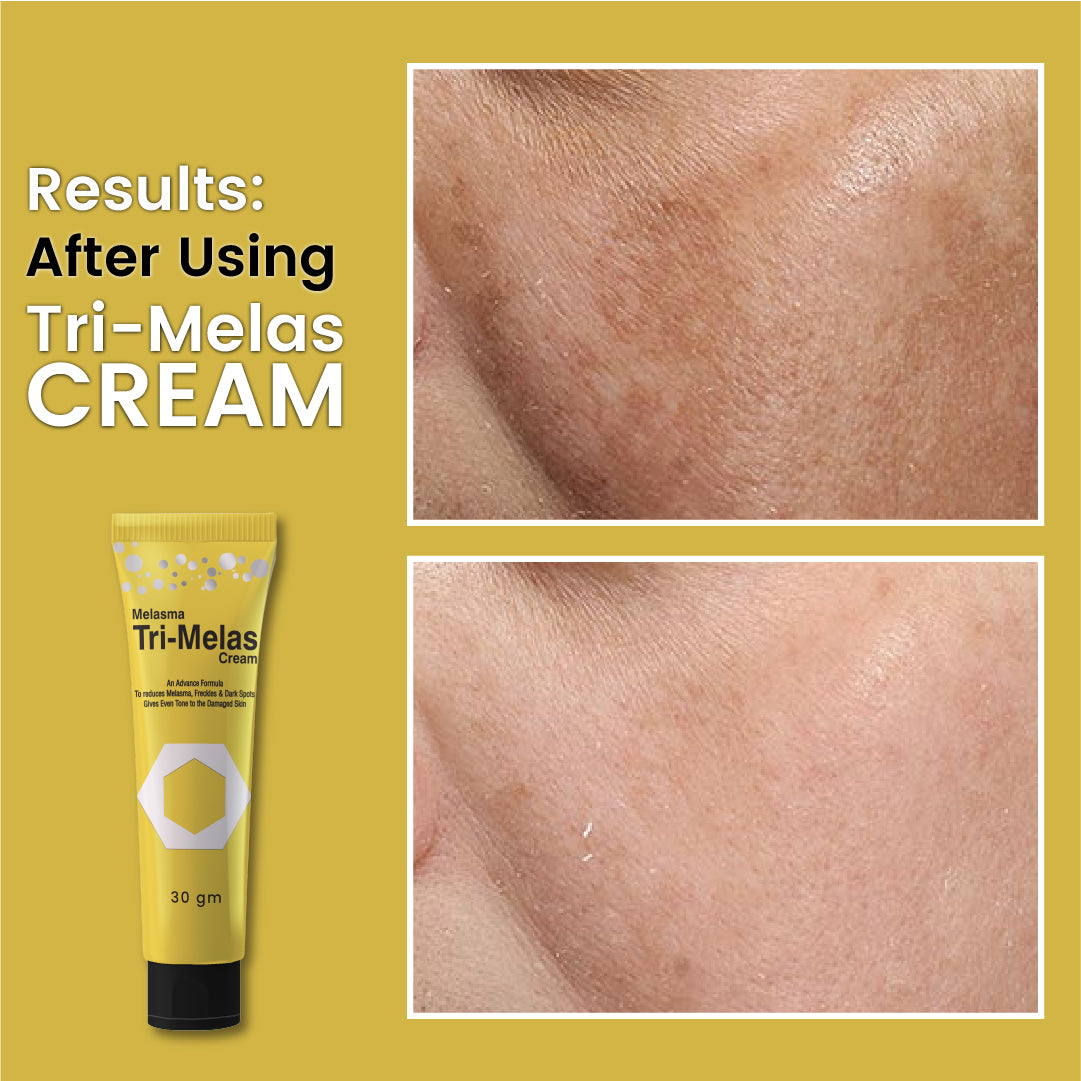
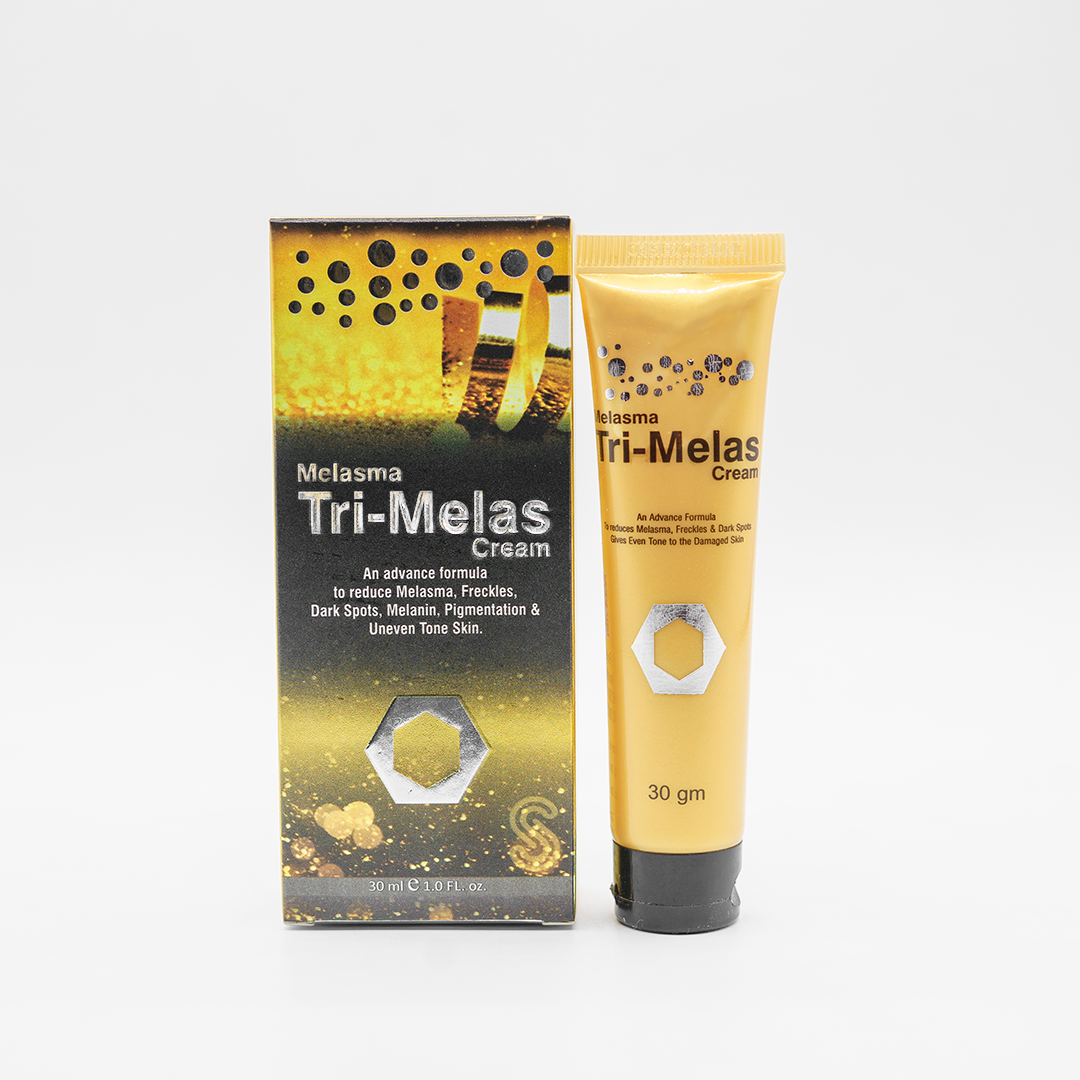
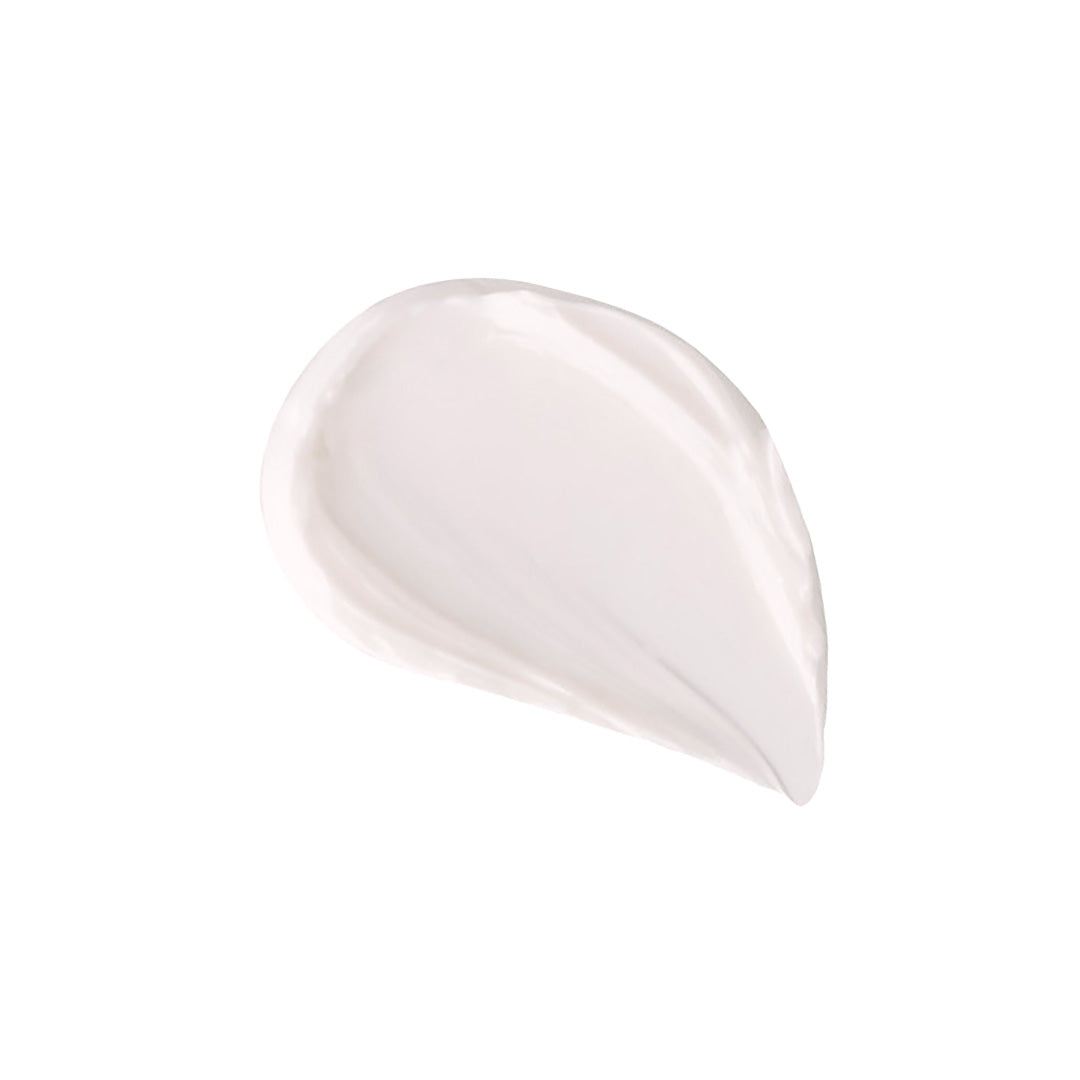
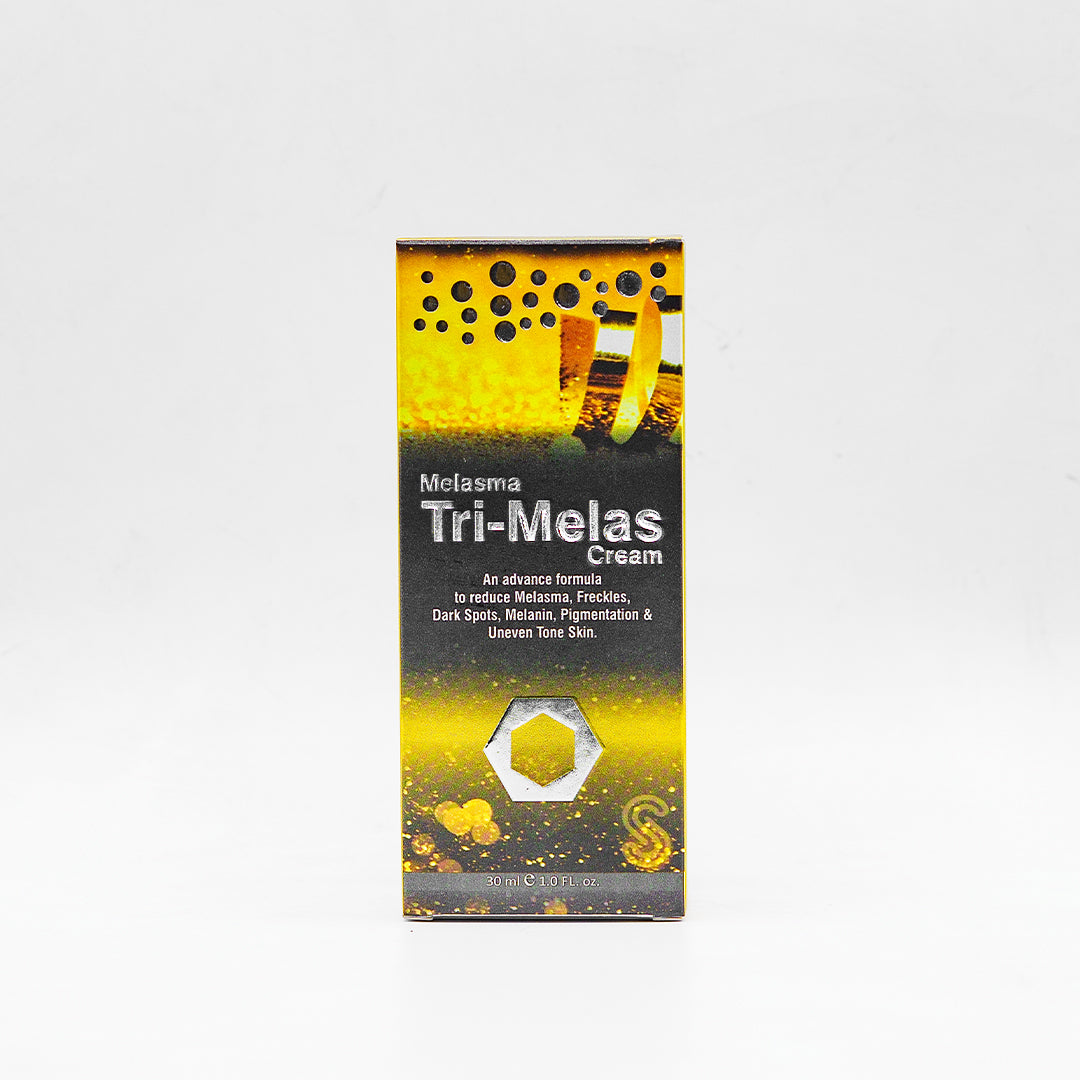
Tri Melas Cream - Best Melasma Cream
🔥 VISIBLE RESULTS IN 1 WEEK 💯
Tri Melas Cream for Pigmentation, Melasma, Freckles & Dark Spots
Benefits
- Remove Melasma & Freckles
- For Uneven Tone Skin
- Visibly Reduces Dark Spots
- Diminishes The Melanin level to give Clear and Bright Skin
- Provides Moisture
- Free Of Harmful Chemicals
- Specially Designed For Asian Skin
- Quantity: 30gm
Brighten and Even Out Your Skin Tone
Tri-Melas Cream is formulated to effectively reduce dark spots, melasma, freckles, and uneven skin tone. By targeting excess pigmentation, it helps restore a naturally brighter and more balanced complexion. With consistent use, it promotes clarity and radiance, giving your skin a healthy, refreshed look.
Lightweight and gentle on all skin types, this cream absorbs quickly without leaving a greasy feel. It’s an ideal daily solution for anyone looking to diminish discoloration and maintain smooth, even-toned skin. Add Tri-Melas Cream to your skincare routine and enjoy visible results with confidence.
HOW TO USE
☀️ AM Routine
- Cleanse your face with 24K Gold Face Wash for 3-4 minutes.
- Apply Sunsoul Sunblock before going out & even at home. Reapply after 4-5 hrs to maintain protection.
🌙 PM Routine:
- Cleanse your face with 24K Gold Face Wash for 3-4 minutes.
- Apply Tri Melas Cream for freckles, dark spots, melasma, and pigmentation. Slightly massage to absorb completely.
INGREDIENTS
Sodium Ascrobyl phosphate, Kojic Acid Dipalmitate, Alpha Arbutin, Licorice Extract, Wheat Germ Oil (Vitamin E), Hyaluronic Acid, Proprietary Blend of Sepi White, Tea Tree Oil & Lipinate GC.
What are the Symptoms of Skin Pigmentation (Melasma & Freckles)?
Skin pigmentation issues like melasma and freckles appear as patches of discoloration, uneven skin tone, and dark spots. These patches are darker than the usual skin tone and tend to be symmetrical on both sides of the face.
Where do melasma and freckles commonly appear on the face?
- Bridge of the nose
- Forehead
- Cheeks
- Chin
Can melasma & freckles appear on other parts of the body?
Yes, melasma & freckles can also develop in sun-exposed areas such as:
- Forearm
- Neck
- Shoulders
Do melasma & freckles cause any physical harm?
No, skin discoloration caused by melasma & freckles does not cause physical harm, but it can impact confidence and overall appearance.
What Causes Skin Pigmentation (Melasma & Freckles)?
The exact cause of pigmentation issues like melasma is not fully understood. However, certain factors increase the risk, especially for people with darker skin tones.
What are the common triggers of melasma and freckles?
- Excessive sun exposure (UV rays)
- Hormonal changes
- Genetic predisposition
- Use of irritating skincare products
- Increased melanin production due to inflammation
- Stress and thyroid disorders
For more information you can visit: What causes melasma?
Frequently Asked Questions (FAQs)
1. What is Tri Melas Cream used for?
Tri Melas Cream treats pigmentation, melasma, freckles, and dark spots while improving overall skin tone.
2. Is this pigmentation cream safe for all skin types?
Yes, Tri Melas pigmentation Cream is dermatologically tested and free of harmful chemicals, making it safe for most skin types, including sensitive skin.
3. How long does it take to see visible results after using melasma cream?
Visible improvements can typically be seen within one week of consistent use, depending on the skin type and severity of pigmentation.
4. Can I use Tri Melas Cream during the day?
It is best to use the cream at night. During the day, always apply sunscreen to protect your skin from UV rays.
5. Does this melasma cream help with dark spots and uneven skin tone?
Yes, Tri Melas Cream reduces dark spots, freckles, and melasma while promoting an even skin tone.
6. Where can I buy Tri Melas Cream online in Pakistan?
You can purchase Tri Melas Cream online from Dr. Romia, a leading skincare brand, at www.drromia.com!
7. Is this cream suitable for sensitive skin?
Tri Melas Cream contains natural extracts and is free of harsh chemicals, making it suitable for sensitive skin. However, a patch test is recommended.
8. Can men use this cream for pigmentation treatment?
Yes, Tri Melas Cream is effective for both men and women seeking treatment for pigmentation, melasma, and freckles. Explore the complete pigmentation treatment range here.
9. Can I apply makeup after using Tri Melas Cream?
Yes, but allow the cream to fully absorb before applying makeup to prevent product interference.
Choose options







